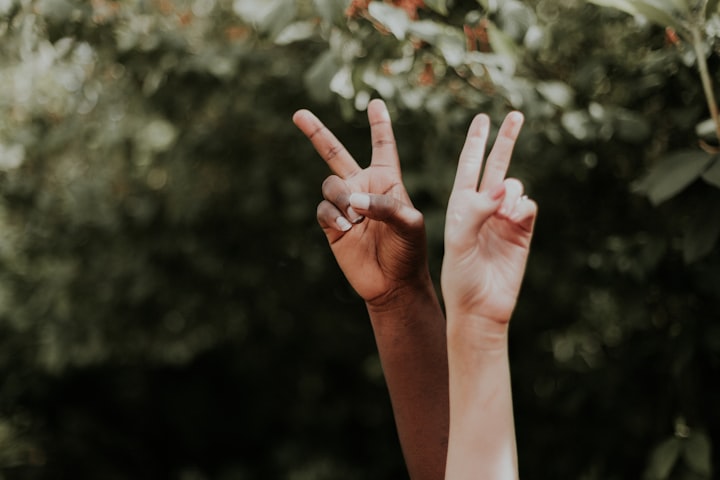
In today’s world, racism is experienced daily by people who are labeled as inferior by society based on the colour of their skin. Various organizations actively contribute to communities in the fight against racism and there is a significant value in why it is so important to do so. As well, it is important for us to understand the depths and the obstacles of racism and how it affects certain populations. African Americans living in the United States undergo an immense amount of racism. The injustices towards this group of people, based on their skin color, has created consequences that have become detrimental to their well being.
A 2011 review by Grosfoguel emphasizes that, racism overall is seen as a socially structured ladder that places minority groups on the lowest end of the spectrum, and has been existent for centuries by capitalist and colonial world systems (as cited in Grosfoguel 2016, pg. 10). Racism is a structured system of discrimination and bigotry. This social injustice issue both directly and indirectly disadvantages people of colour. These groups are judged on their physical traits which are considered disadvantageous in society. There are certain states in America where African Americans experience higher volumes of racism. Freng, Schweitzer, Estrada-Reynolds, Leki & Choi (2022) state, “Using a similar measure of regional prejudice, Chae et al. (2015) found higher levels of prejudice in the rural Northeast and Southern United States.“ (Chae et al., as cited in Freng et al., 2022, p. 264). While racism is highly present in many parts of the United States, it is more active in the Northeast and Southern areas of the country.
Racism is evidently both structural and systemic. One researcher noted that “Racism is not always conscious, explicit, or readily visible–often it is systematic and structural.” (Bravemen, 2022, p. 171). There is structural racism fixed into communities and in their beliefs which puts African Americans in a vulnerable position; resulting in constant abuse and intimidation in communities. Jones (2000) found that the abuses experienced through racism impact the healthcare systems and the health outcomes for this population (p. 1212). Studies conducted demonstrate that prejudice and stereotypes are issues that are very existent in the healthcare system (Smedley et al., as cited in Bailey & Feldman, 2021, Unequal Healthcare, para. 3). The biased opinions and ideologies that people create towards African Americans influences the care that they receive in the medical care system, as they can be viewed as less than, resulting in not being prioritized. Rather they can be devalued, and compared to other populations, do not receive the adequate guidance or the quality of care that they require. A study by Williams & Mohammed (2009) found that an individual's mental and physical health is directly affected by racism (Williams & Mohammed as cited in Williams & Mohammed, 2013, p. 1161). People exposed to racism experience tremendous stress, and are prone to develop various health issues, both mental and physical. Constant exposure to racism will have an effect on an individual's overall health. Experiencing racism can lead to feelings of insecurity, self doubt, and even anxiety which are all potential factors related to stress; this steers an individual to make poor choices to relieve that stress, usually in their consumption of food, drugs or alcohol, which later results in more health problems. All the psychological suffering that a person goes through takes a toll on their physical body.
The United States has been run by biased, prejudiced and stereotypical leaders. Clayton, Moore & Jones-Eversley (2021) state, “The USA is replete with examples of presidents who were racists before taking office and while in office” (p. 389). Focusing on the history of America with racism, it is important to acknowledge the influence of the leaders of the country. A country cannot progress and fight against racism if the same individual who runs the country is reflective of this social injustice. We have seen in the last few years an increase of racism in the United States influenced by political figures. Police brutality is a topic that has also recently become more present due to its correlation to racism. Mclain (2021) emphasized that the protests that occur in America, are all in reaction to the police brutality and following murders of several individuals of colour (p. 492). The recent history of racism within the leadership of the United States and the more public presence of police brutality has brought the topic of racism to the forefront.
Various groups in the United States take steps in fighting against racism by actively engaging with their communities through protests, petitions, or spreading awareness on this social injustice through education. One of the organizations that has taken a step towards fighting against racism is an institution by the name of “Organization”, led by Raza Mir and Patrizia Zanoni. This establishment supports the Black Lives Matter movement in the United States. “Organization” contributes to fighting against racism by promoting and publishing articles that commit to encouraging conversations on the topic of racism. Mir & Zanoni (2021) state, “Over the last decade, a number of papers in the journal have helped advance the conversation on race in organizational studies” (p. 5). The articles that are submitted include discussions that deal with anti-Black racism and contribute to the goal of encouraging conversations about the topic. This organization emphasizes the importance of the struggles of African Americans. Though there are a few barriers, as the research conducted for this organization does not focus entirely on anti-Black racism, and there is a shortage of contribution from African Americans in the editorial boards and writing for the organization themselves (Mir & Zanoni, 2021, p. 5). “Organization” is still extremely proud of the spread of knowledge and understanding that they have already generated through the publication of their journals and articles.
The National Association for the Advancement of Coloured People (NAACP) is another organization that supports the fight against racism, funded by Wells-Barnett, W.E.B Du Bois, Mary White Ovington and others. The NAACP advocates for equitable treatment for African American communities through representing social service groups to fight for political change. Ward (n.d) stated “The NAACP has made an indelible mark on our history in the fight for civil rights. From its inception, the organization has advocated for the fair and equal treatment of African Americans and continues to ‘tear down the legal and social structure of racial segregation.’” (Ward, n.d, Importance, para 1). A minor obstacle for this organization is the issue in the union of so many groups because it potentially removes the uniqueness of a case that they may be fighting for (Ward, n.d, Ties to the Philanthropic Sector, para 1). Nonetheless, the NAACP has accomplished many of their goals to achieve equality in civil rights and continues to advocate for African American communities.
If we do not actively make an effort to stand against racism, where exactly are we headed as a world entirely? This applies to any social injustice in the world. Our main goal as human beings is to live with stability and equality. It is important to stand up for the oppressed who seek to have the same opportunities and respect as everyone else. We as a society should be willing to accept and celebrate all of our differences rather than criticize or discriminate against others. We are no different from one another, and the colour of an individual's skin does not depict where they should sit in a society. We are all equally made the same and therefore we all deserve the same respect, opportunities and acceptance that most should have. In the end, empowerment is a goal, for without it we are going nowhere. If we do not make an effort to fight against racism, we are only giving racism an opportunity to exist for a lifetime. The steps and plan of action against racism that I will take will be, to promote an organization that fights against racism through social media, to connect with members of the Black Lives Matter movement in Calgary, and to give others an opportunity to read my paper and have a discussion with them about how they could also take part in the fight against racism.
Ultimately, African Americans continuously encounter the greatest deal of discrimination and prejudice, specifically in the United States, which has consequences and is damaging to their community. The outcomes of such unceasing maltreatment and abuse towards African Americans because of their skin colour, will result in more complications additional to their mental health, and will influence the care that they receive in the healthcare system. Organizations such as the NAACP and “Organization” actively fight against racism by standing up for the African American community while advocating for political change, as well as addressing this issue through encouraging important discussions about racism. Society is currently facing several conflicts resulting in much unnecessary division. Unity is vital and necessary to move in the right direction for stability in our society. Otherwise, division will cause a never ending battle with racism.
References
Bailey, Zinzi, D; Feldman, Justin, M. (2021). How Structural Racism Works- Racist Policies as a Root Cause of U.S Racial Health Inequities. The New England Journal of Medicine, 384, 768-773. 10.1056/NEJMms2025396
Bravemen, P, Arikin, E, Proctor, D, Kauh, T, Holm, N. (2022). Systemic And Structural Racism:
Definitions, Examples, Health Damages, And Approaches To Dismantling. Health Equity, 41, 171-178. 10.1080/00224545.2021.1893149
Clayton, D.M, Moore, C.S, Jones-Eversley, S.D, (2021). A Historical Analysis of Racism Within the US Presidency: Implications for African Americans and the Political Process. Journal of African American Studies (New Brunswick, N.J), 25, 383-401. 10.117/s12111-021-09543-5
Freng, S, Schweitzer, K, Estrada-Reynolds, V, Leki, E, Choi, S. (2022). Geographic distribution of prejudice toward African Americans: Applying the two-dimensional model. The Journal of Psychology,162, 262-279. 10.1080/00224545.2021.1893149.
Grosfoguel, R. (2016). What is racism? Journal of World-Systems Research, 22, 9-15. https://doi.org/10.5195/jwsr.2016.609
Jones, CP. (2000). Levels of racism: a theoretic framework and a gardener’s tale. American Journal of Public Health, 90, 1212-1215. 10.2105/ajph.90.8.1212
Mclain, P.D. (2021). Trump and racial equality in America? No pretense at all! Policy Studies, 42, 491-508. https://doi.org/10.1080/01442872.2021.1979502
Mir, R, Zanoni, P. (2020). Black Lives Matter: Organization Recommits to Racial Justice, Sage, 28, 3-7.httpDs:O//dIo:i1.o0r.g1/107.171/1773/510350580482402909666740
Ward, E. (n.d). National Association for the Advancement of Coloured People (NAACP), https://www.learningtogive.org/resources/national-association-advancement-colored-people-naacp
Williams, D, Mohammed, S. (2013). Racism and Health l: Pathways and Scientific Evidence. American Behavioral Scientist, 57, 1152-1173. 10.1177/0002764213487340





Comments
There are no comments for this story
Be the first to respond and start the conversation.